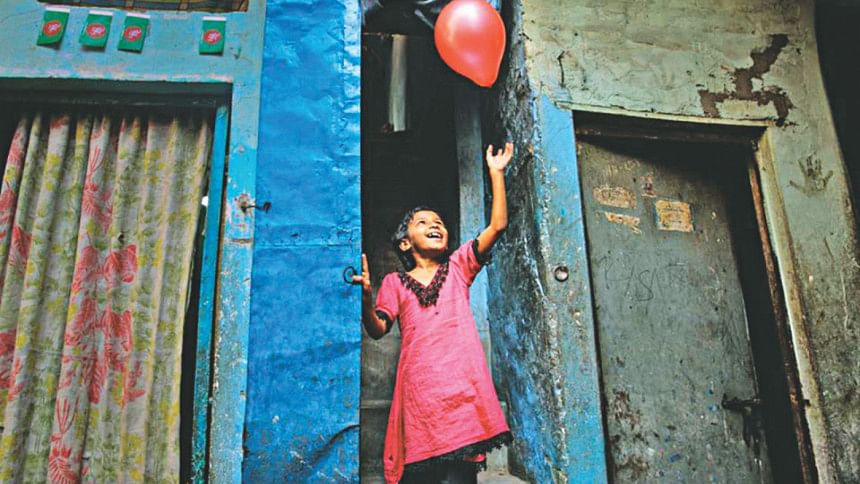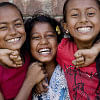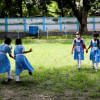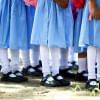A reality far from poetic

There is something very beautiful about being in transition, being stuck in between. Whether it's in transit at an airport, a city that's somewhere between the east and the west, dawn or dusk, when the day is either deciding on a beginning or an end, or a woman in her adolescence, on the journey to transforming into a woman from a child. There is something inherently poetic about being a girl.
This year's International Day of the Girl (IDG) underscores the efforts of the UN global attention and action to the challenges and opportunities girls face before, during, and after crises. Sadly, the reality of the world's 1.1 billion girls is far from poetic or charming.
Since June, the country has been affected by one disaster after another. The landslides in the Chittagong Hill Tracts, the floods, the Rohingya crisis. Disaster after disaster unfolds, piling on us, before we can even begin to recover from the previous one. And as these disasters unfold, numerous girls are trapped and lost.
The CIA World Factbook states that there are 21,521,977 female children in Bangladesh. The landslides in Chittagong Hill Tracts, which started on June 13 with a few episodes, resulted in the loss of 160 lives and the destruction of 60,000 houses, schools and offices. It affected about 80,000 persons across five districts: Bandarban, Chittagong, Cox's Bazar, Khagrachari and Rangamati. Thirty-four thousand of these people were severely impacted as they lost their houses together with their belongings, basic necessities, livelihoods and food stocks (HCTT Response Plan, July 12, 2017). The Government of Bangladesh reports that, as of August 27, the floods have affected 32 districts in the northern, northeastern and central parts of the country affecting a total of more than eight million people. An estimated total of 1,03,855 houses are reported to have been destroyed and 6,33,792 have been partially damaged (UNRC Bangladesh, September 18, 2017).
How did these losses affect female children? How many girls dropped out of schools? How many girls were kidnapped or trafficked? How many became victims of violence?
While we have yet to assign enough importance to account for the exact number of women and girls affected by most disasters, we have had to acknowledge that women and girls are, in fact, the most vulnerable during disasters. During conflicts and natural disasters, it is women and adolescent girls who are faced with greater risk of abuse, sexual exploitation, violence and forced marriage.
Because of the nature of the Rohingya crisis, we have been slightly more diligent in terms of tracking the number of women and children affected and it is far from a pretty picture. An Inter Press Service report published on October 3 states that the majority of Rohingya refugees are women and children, i.e. 53 percent are female and 58 percent are under the age of 18.
Channel News Asia reports an estimated 4,20,000 Rohingya refugees displaced since August 25. They have mostly been cramped inside two camps in Kutapalong and Nayapara. I need not recount the horror that has been unleashed on the women and girls before they reached the camps. Those who have been following the Rohingya accounts are well aware of it. Many have lost their families, communities, and all their possessions, and after an emotionally and physically gruelling journey across the border, they are left with little hope.
Women who survive a crisis often become heads of household, with the sole responsibility of caring for their children. Following the Rohingya attacks as well, women-headed households among the displaced population have suffered during the short-term relief distribution process, because it was physically impossible for them to keep up with the way the aid was being distributed, thus leading to an imparity in terms of relief distribution among men and women. In the longer term as well, they often have to overcome immense obstacles to provide care for children, the sick, the injured and the elderly, and bear the heaviest burden of relief and reconstruction.
And girls? They drop out of school, lose their childhood, and their needs are often forgotten while they prioritise care for others. After a crisis destroys a family's livelihood, domestic violence is likely to increase radically. Catastrophes may make it impossible for children, and especially girls, to go to school. In dark, unlit, unprotected refugee settlements, adolescent girls walking in the evening may be at risk for harassment or rape. They risk their dignity. They risk their lives.
I do not have exact figures or numbers for the number of girls affected by the catastrophes that are characteristic of my beloved country. So, I look for stories. I found this piece as I was browsing my social media last night on photographer GMB Akash's Facebook page.
"I am searching for my daughter. It's been fifteen hours now she is missing. I am not telling it to anyone, because you know what island people will do instead of helping me to find out where my child is? They will make story, they will make bad stories about my teenage girl. During last flood it had happened with Sapna. Sapna was just a twelve years old girl, who committed suicide when water went down. Villagers said she flew with a boy. But like every flood, when water enters, traffickers enters too, she was taken by human trafficker. She managed to come back by escaping from those evil men but villager's stories forced her to commit suicide. I do not want it to happen with my daughter. I will search for her alone. I lost my house, my cattle and my all belongings. But now no matter what I will not let my daughter to get lost from me. — Dilara Begum"
Emergencies rob girls of their beautiful, poetic awkwardness. Too often, girls and girlhood are lost in crises. The millions of girls, who should only be a source of power, energy, and creativity, are reduced to commodities and casualties.
There is no question that highlighting challenges and opportunities girls face before, during, and after crises, is important. The question is, is it enough to mark days? By setting aside token days to remember valuable things, we reduce those things to tokens. And the Sapnas of this world are too precious to be things, too valuable to be tokens.
Shagufe Hossain is the founder of Leaping Boundaries and a member of the editorial team at The Daily Star.









Comments